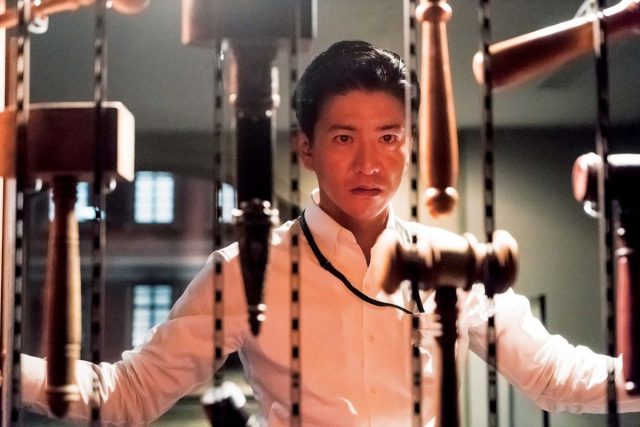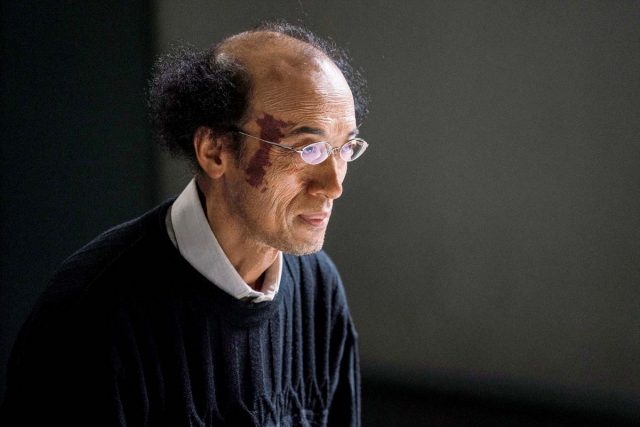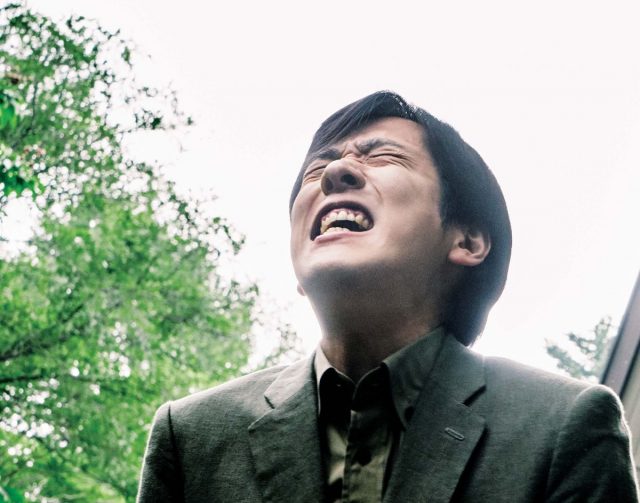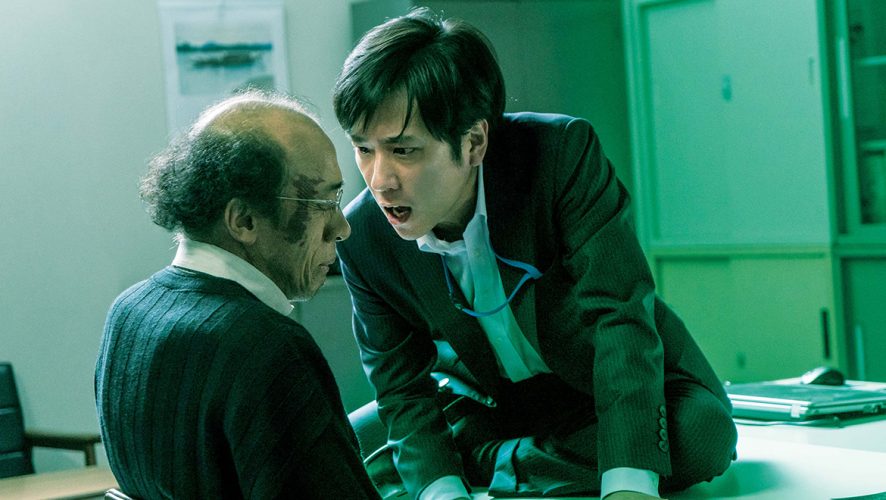At first glance, Killing for the Prosecution may seem like your run-of-the-mill legal drama, about an unrepentant murderer who’s slipped through the law’s rather fallible grasp, facing off against a veteran lawyer personally invested in seeing him behind bars.
But… that’s not what it is.
If you’re going into the movie expecting to be wowed by courtroom action à la How to Get Away with Murder, then you will find yourself brutally disappointed. There’s a lot packed into this two-hour-long feature, but the action never actually makes it to the courtroom.

Instead, we’re led on a merry chase along with our protagonists — seasoned prosecutor, Mogami Takeshi, played by the ever suave Kimura Takuya (Hero, Blade of the Immortal), and his shiny-eyed, eager-to-please protégé, Okino Keiichiro, played by Ninomiya Kazunari (Gantz, Assassination Classroom) as they investigate the recent homicide of an elderly couple, brutally stabbed to death in the false security of their quaint little cottage. And before you clutch your pearls, aghast, because why would anyone do such a thing to a couple of harmless, helpless, hapless— well, they were unlicensed debtors.
For all of Mogami’s and Okino’s prosings about delivering justice where it’s warranted, they don’t seem particularly concerned about conducting a thorough investigation. As a matter of fact, they spend more of the film’s runtime arranging clandestine meetings with jaded politicians, cohorting with strangely civil yakuza members and dining at various food outlets, all whilst displaying increasingly underhanded tactics in their attempts to force a confession out of Suspect Number One, Matsukura.

Matsukura is a monster, the film tells us. He’s raped and killed and he’s gotten away with it, thanks to the expiring statutes of limitations, and exhibits little remorse. It quickly becomes clear that Mogami is desperately eager to pin the murder on Matsukura as vengeance for his previous crimes, regardless of whether he is guilty or not. And Okino goes along with it because, because he suffers from a severe case of ‘senpai-notice-me’.
The duo’s interactions build off a tried-and-tested relationship dynamic – think Harvey Specter and Mike Ross from Suits, Harry Hart and Eggsy Unwin from Kingsman, or even, Tony Stark and Peter Parker from the Marvel Cinematic Universe. Kimura and Ninomiya’s delivery of the mentor-mentee archetype is passably convincing, but ultimately lacking in heart.

Like the rest of the film, elements are bogged down by distracting ornaments (no, that’s not a wisecrack at the almost insultingly decorative supporting cast of women) that diminish rather than embellish. We’re introduced to an extensive collection of characters, some of whom appear for a scant few minutes and seem to be of little narrative significance. The deluge of inconsequential figures passing through scatters our attention, and accordingly, our capacity for empathising with our protagonists.
As their paths diverge — not without a token show of reluctance — what could have been an endearing display of humanity for Mogami and a heartbreaking journey of disillusionment for Okino came off as a severe case of emotional whiplash, hastily tagged on in the denouement.

That’s not to say there isn’t any merit in the multilinear (explicitly-labelled) three-act structure director Harada Masato (The Last Samurai, Sekigahara) has chosen for this film. While you may find its coherence flagging every so often, the film succeeds in presenting its audience a patchwork of societal issues, which makes up the underbelly of Japan’s rigid bureaucracy.
It’s a soft critique of what structural problems may be prevalent in a system designed to bring about order, but what it fails to do is — what we’ve been conditioned to expect in typical Hollywood narratives — to offer solutions.
Most memorably, a gunshot is fired during the film’s climax, but it’s followed immediately by a strange dream sequence harking back several decades, to World War II, ultimately depriving its viewers of any emotional catharsis. On screen, Mogami is subsequently deprived catharsis when (spoiler alert) Matsukura finds himself acquitted. This lack of closure speaks to a postmodern lack of conviction, in the ethical dilemma that pits the law against its neglected victims (if this was a Disney movie, we would have just been told to follow our hearts).

In a way, the film is both confusing and confused. After sitting through two hours of mostly talking heads, the frustrated cry the movie ends itself on echoes the one going off in its audience’s minds. So maybe Killing for the Prosecution isn’t completely sure of the story it’s supposed to tell, but you know what, that could ultimately be the point of it.
GEEK REVIEW SCORE
Summary
Killing for the Prosecution and its postmodern tendencies will test your memory for names, attention to detail and aptitude for joining dots.
Overall
6/10-
Story - 7/10
7/10
-
Direction - 6/10
6/10
-
Characterisation - 5/10
5/10
-
Geek Satisfaction - 6/10
6/10













